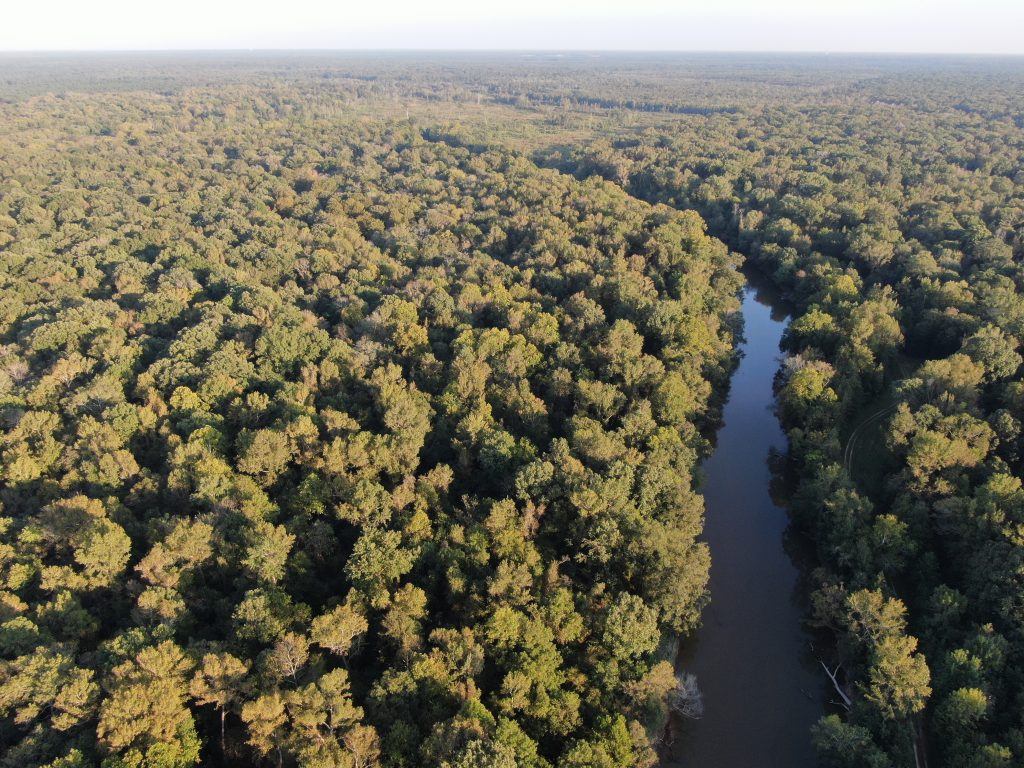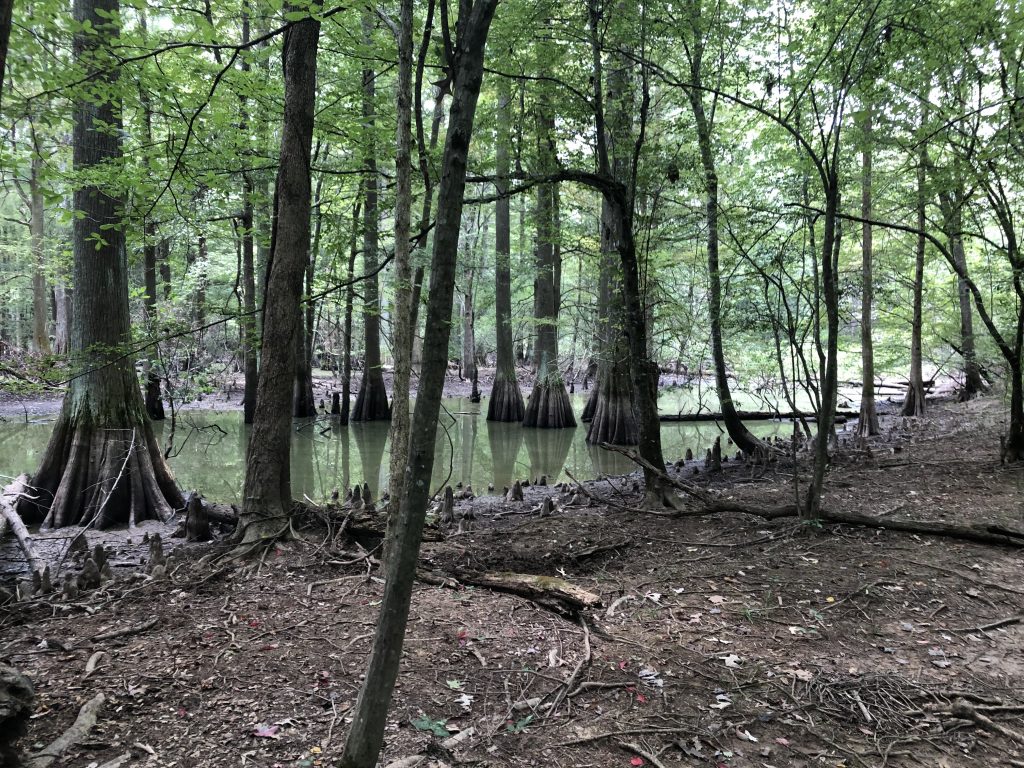By Ron Gallagher
 In October, TLC secured its largest land conservation project ever — 1,120 acres in Johnston County known as Brogden Bottomlands. This project maintains an important wetlands ecosystem that helps protect the Neuse River for downstream users and is a significant addition to the protected lands in an Audubon-identified Important Bird Area. Just 35 miles southeast of Raleigh and 5 miles southeast of Smithfield, Brogden Bottomlands will eventually be part of the Mountains-to-Sea Trail.
In October, TLC secured its largest land conservation project ever — 1,120 acres in Johnston County known as Brogden Bottomlands. This project maintains an important wetlands ecosystem that helps protect the Neuse River for downstream users and is a significant addition to the protected lands in an Audubon-identified Important Bird Area. Just 35 miles southeast of Raleigh and 5 miles southeast of Smithfield, Brogden Bottomlands will eventually be part of the Mountains-to-Sea Trail.
“This property is a refuge for wildlife and serves as a reservoir for stormwater in a rapidly developing area of the state. It serves as a key habitat corridor in our region and is also a carbon sink, absorbing more carbon than it releases,” said Leigh Ann Hammerbacher, senior associate director of conservation. “As our population continues to grow, conservation of properties like this are essential for our region’s resiliency.”
The Brogden Bottomlands acquisition protects prime farmland, upland forest areas, and a unique brown-water swamp. It protects over 2 miles of Neuse River frontage, and 13,000 feet of streams feed the river along the property, including many vernal pools and wetlands. The property includes rare oxbow lakes dotted by mature cypress trees as well as sloughs, streams, and a massive 650-acre floodplain.
That floodplain is one of the most important types of natural areas to protect to help control downstream flooding, which is key to maintaining a resilient landscape. Flooding of the Neuse has drawn a lot of media attention in recent years after storms that have devastated many communities.
This property is critical for absorbing stormwater and floodwaters, and the area acts as one of the largest natural water-pollution and flooding control systems on the river. It also filters impurities from the Triangle’s urban stormwater runoff.
The 43,000-acre Upper Neuse River Bottomlands Important Bird Area in which TLC’s new acquisition lies, is unusual enough that the green swath can be noted from space, said Curtis Smalling, conservation director for Audubon North Carolina. Decades of growth in Wake County have pushed development pressure into Johnston County, and sand-mining operations within the area have changed rich forest habitat into lakes, according to Smalling.
“We’ve lost a lot of our bottomlands in the Southeast over the last 200 years,” he said.
In a way, Smalling said, Brogden helps “connect the dots” of preserved lands that include TLC’s 405-acre Bailey and Sarah Williamson Preserve, which opens to the public on April 25.
The purchase of Brogden Bottomlands also makes TLC and Johnston Community College’s Howell Woods Environmental Learning Center neighbors as well as partners in conservation. Jordan Astoske, Howell Woods Director, said the organization already has a working relationship with TLC and Audubon.
“Johnston Community College has had a longstanding commitment to conservation,” Astoske said. The facility that is officially known as the Rudolph Howell & Son Environmental Learning Center is used for wildlife and forestry management, outdoor recreation, hunting, and environmental research.
A long-time priority
TLC has been interested in protecting Brogden Bottomlands nearly since the organization’s founding in the early 1980s because the land is important locally and regionally as wildlife habitat. Hammerbacher said that her research on the property turned up a development plan that had been drawn about 50 years ago.
More recently, a 100-home subdivision has been built about a mile away, and nearby tracts of lowland forest have been clear cut, Hammerbacher said.
The area around Brogden is hardly wilderness. There have been homes there for many years and a spur railroad line that brought goods to a small settlement known as Grabtown because it was where people could grab supplies they needed. Grabtown is also where actress and singer Ava Gardner was born.
A no-interest loan from private donors enabled TLC to acquire the tract. Now TLC is working to secure private and public resources so the preserve can be opened for public use. As a future part of the Mountains-to-Sea Trail, there will be opportunities for hiking and walking.
Birding will also likely be a popular activity.
Audubon’s Smalling said the bottomland forest is excellent habitat for several migrating warblers and the summer tanager. Mississippi kites nest there, he said. The northern parula, pictured on the previous page, is also a common summer visitor.
Mammals that need the habitat include fox squirrels, black bears, and bobcats.
Coincidentally, TLC was able to announce the record acquisition just when the National Land Trust Alliance’s annual Rally event was bringing more than 2,000 conservationists and land-trust employees to Raleigh for the first time.
“Last year, we set a goal to double the pace of conservation in the Triangle by protecting 1,000 acres per year until 2025,” said TLC Executive Director Sandy Sweitzer. “With the protection of this property and the support of the community, we are confident we will achieve that.”

